Most of the IOT’s hardware selection includes 3 major elements: what to measure, how to transmit measurements, and how to power the system. Products are very much shaped around these three questions.
IMBU has extensive experience in selecting the right ingredients to successfully design and build a product that meets expectations and provides a base for the future. Sensor selection is driven by machinery working-principles and identifying major root-causes of machinery failure. However, power-consumption and environmental requirements are also critical requirements. Reliable performance of optical sensors requires lenses to stay clean and low power consumption typically prefers a 0-10VDC output signal over a 4-20mA current loop, just to give two examples.
IMBU has a lot of experience using high-frequency sampling of accelerometers, pressure sensors, and proximity probes with sample frequencies up to 800kHz. This allows advanced (spectrographic) analysis of sensor signals, which can, for example, be used in measuring wear-and-tear of metallic surfaces.
Selecting the right method for offloading data, to the server for further analysis, can be complex. Cellular data-transmission is often used by IMBU but some locations in the world have spotty or no coverage. Some countries have full coverage for Lora but many have not. Satellite communications can be expensive and power-hungry. The satellite options, which are affordable and energy-efficient. offer very limited data capacity. Which data-transmission method(s) is/are selected does have an effect on the whole system set-up. As IMBU has done projects around the globe, we have a good feel for what works and what doesn’t.
In case the system is battery-powered, the expected battery life has a major effect on all other parts of the system. In battery-powered systems, IMBU typically targets a battery life of years. In some of our projects, up to 7 years is not an exception.
Which data can we collect?
Machine vibrations can provide an excellent detailed view of the machine’s condition. It can however also be very complex to interpret these measured vibrations. IMBU has specialized in capturing high frequency sampled time-waveforms, which are either processed at the edge or are uploaded to the server in its entirety.
Although vibration analysis is already used a lot on pumps and compressors in the oil-and-gas industry, it is also our firm belief that much of what could be learned through these signals remain unnoticed, often because the measurement itself is already done inaccurately or even wrongly, making the analysis results pretty much invalid. At IMBU, we measure at high frequencies in order to filter out the part of the sensor frequency response curve where sensor-resonance frequencies are present. Through all the analysis work done, we have also recognized that although the higher frequencies (5kHz-15kHz) are often disregarded, they do contain valuable insights into e.g. valve-health.
One of the advantages of working on a deeper understanding of vibrations is that the sensors themselves are economical, have a long life, are easy to install, and can be very energy efficient. They are therefore uniquely suitable for installation in high volume applications in remote and demanding industrial environments, where longevity is a key factor.
Pressure timewave forms are an excellent base to calculate machine performance. It allows seeing if the machine (e.g. a pump or compressor) runs within its engineered performance boundaries. It can however also offer an excellent base to find operational issues like cavitation (pumps) of valve-leakage (compressors).
For vibration analysis on pumps and compressors, IMBU often uses WIKA pressure transducers. We have however also worked with piezoelectric pressure sensors from e.g. PCB Electronics which have a remarkable frequency response curve with resonance frequencies as high as 250 kHz. With sample frequencies of up to 800kHz, IMBU can take full advantage of this.
Industrial use of RTL systems includes e.g. providing an identity and location of capital equipment and of people who operate in hazardous areas.
- IMBU offers economical location tags, which allow keeping track of assets inside large covered industrial areas where the use of GPS technology is not possible.
- IMBU uses UWB technology for offshore projects in which robust, low-energy, precise locating of industrial assets is required.
- IMBU’s RTLS tags are small and robust. Smart-bolt is an example of a tag that has an M24 bolt form-factor and is covered in PU Rubber making it IP68 and impact resistant.
Although IMBU measures temperatures in many of the applications, for condition analysis we see it as a lagging indicator. Once temperatures rise, mechanical damage is typically already occurring. For condition analysis, IMBU, therefore, prefers to look at earlier indicators such as particle analysis of lubrication oil. Once that starts to rise, vibrations will be a good second indicator.



